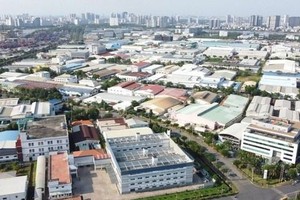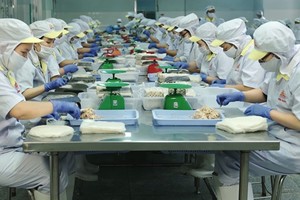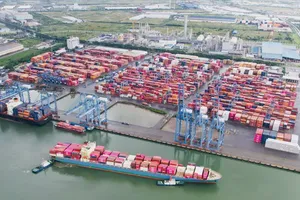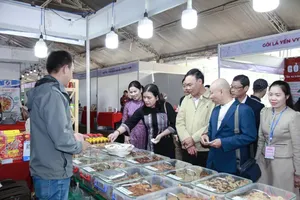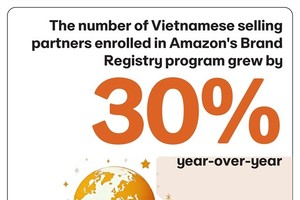 |
Experts participate in the dialogue. (Photo: SGGP) |
In his opening remarks, Mr. Luong Hoang Thai, Director of the Multilateral Trade Policy Department under the MoIT, said that it is one of the milestones marking a turning point in Vietnam's international economic integration process.
“In the first year of implementation, Vietnam’s exports to two new importing markets, Canada and Mexico, grew by nearly 30 percent. In the first year, Vietnam saw a trade surplus of over US$1 billion to the CPTPP market. This is the foundation for the country to ensure the macro-balance of the economy," said Thai. In the first months of 2022, exports to this market reached about $6 billion, making a significant contribution to the general export achievement.
 |
Mr. Luong Hoang Thai, Director of the Multilateral Trade Policy Department under the MoIT, speaks at the dialogue. (Photo: SGGP) |
After three years of implementation, Vietnamese enterprises have effectively exploited opportunities in the CPTPP market and achieved positive results. Specifically, in 2021, Vietnam's total export turnover to CPTPP member countries reached about $45.7 billion, an increase of 18.1 percent compared to 2020. In the opposite direction, the total import turnover of Vietnam from the CPTPP market topped $45.7 billion, an increase of about 37.6 percent compared to 2020.
In the first ten months of 2022, the total import-export turnover between Vietnam and CPTPP member countries touched $88.1 billion, up about 19.2 percent over the same period in 2021. Specifically, export turnover hit $45.1 billion, up 22.1 percent over the same period; import turnover reached about $43 billion, up 16.26 percent over the same period.
More importantly, the CPTPP has helped Vietnam gain a new position in the process of international economic integration when participating in other FTAs.
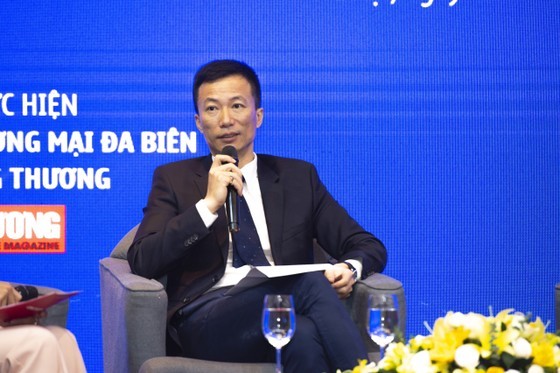 |
Mr. Bui Tuan Hoan, Head of the American Market Division, European - American Market Department under the MoIT, speaks at the dialogue. (Photo: SGGP) |
Recently, some countries have officially applied to join the CPTPP, including the UK, China, Taiwan, Ecuador, Costa Rica, and Uruguay. This signal opens more opportunities for Vietnamese goods to be exported to many new and potential markets, but it also poses challenges.
Mr. Bui Tuan Hoan, Head of the American Market Division, European - American Market Department under the MoIT, assessed that the difficulties when Vietnamese businesses reach this market are the long geographical distance, and the difference in time zones is up to 12 hours, resulting in high transportation costs, almost double compared to before the pandemic.
Affirming that the potential of the CPTPP market is extremely large, Mr. Bui Tuan Hoan said that Canada is a country that relies heavily on imports, spending up to $500 billion each year to import goods, especially food and consumer goods, so Vietnamese businesses need to study and approach it soon. Mexico, with a population of 130 million people, imports about $400 billion of goods annually. It is the gateway to Central and North America that Vietnamese enterprises must exploit and take advantage of incentives on import and export duties in the CPTPP.
According to Mr. Hoan, the CPTPP market currently has great demand for products in the electronics, cell phones, textiles, leather and footwear, and seafood industries. As soon as the CPTPP became effective, textile and garment exports to this market rose by 19.4 percent in 2021; furniture exports increased by 10.5 percent; cashew nut exports soared by 20 percent.
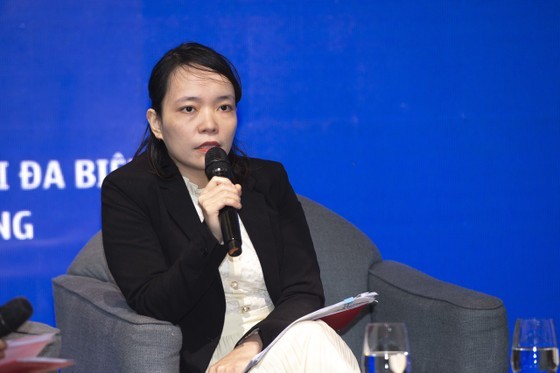 |
Ms. Phan Thi Ngoc Minh, from the Import-Export Department under the MoIT, speaks at the dialogue. (Photo: SGGP) |
The preferential tax rate is an advantage for Vietnam to compete with other countries in this market. For instance, as for the Canadian market, with a commitment to bring the import tariff to zero percent after three years, the current import duty on textile and garment products has been reduced to this level. Similarly, most seafood products are enjoying zero percent tax now. This is an opportunity and export advantage that Vietnamese enterprises should not waste.
Ms. Phan Thi Ngoc Minh, from the Import-Export Department under the MoIT, suggested that businesses actively seek information about the products in great demand in this market, as well as import policy and specific preferential tax rates. “Especially, enterprises need to ensure the rules of origin of goods as committed by CPTPP members to enjoy preferential tax rates, invest more funds and human resources in keeping records to prove the origin of raw materials," Minh noted.
In addition, businesses also need to strengthen connections with domestic and intra-bloc raw material suppliers because if they mainly use raw materials from countries outside the CPTPP as currently, they will not be able to benefit from preferential tariffs of this agreement.
